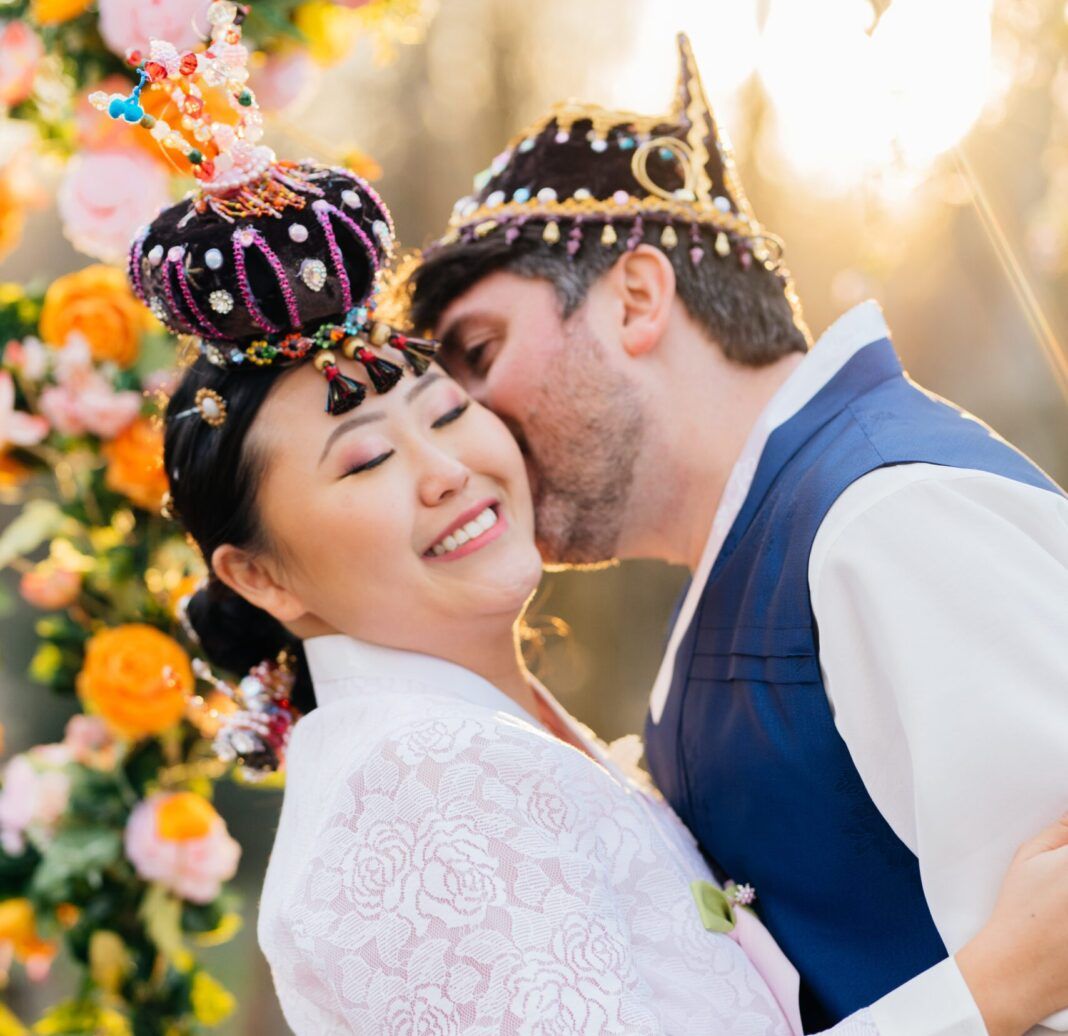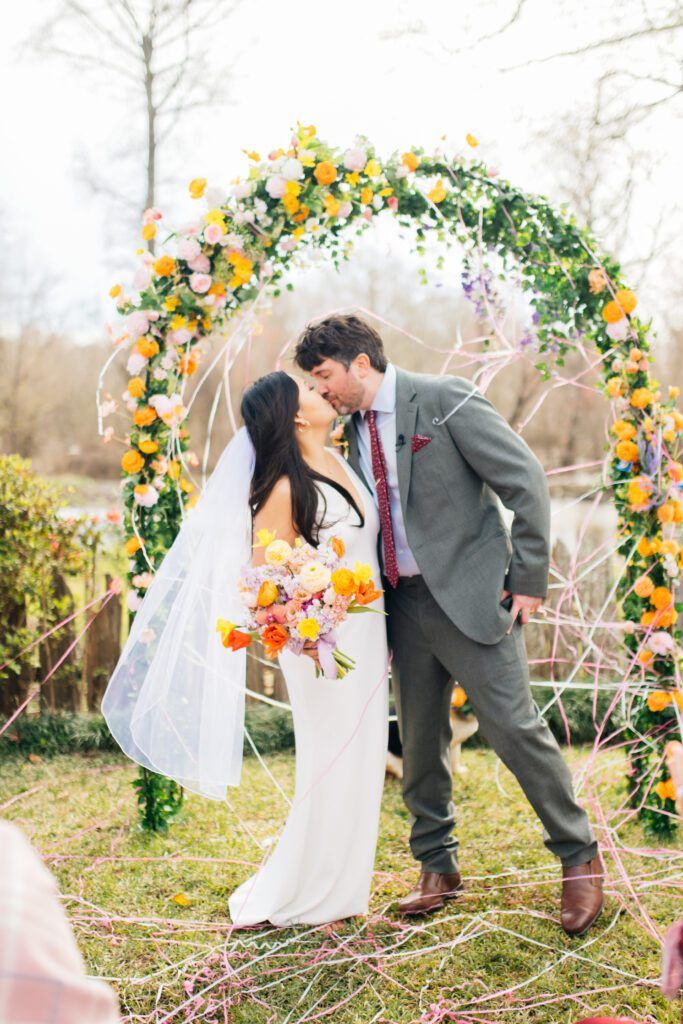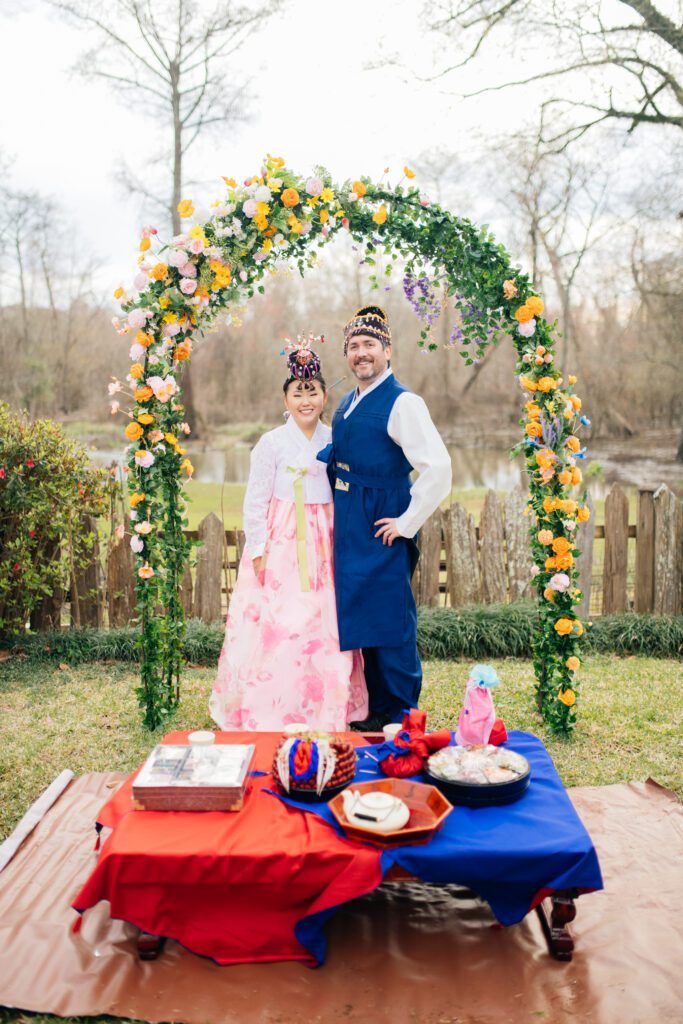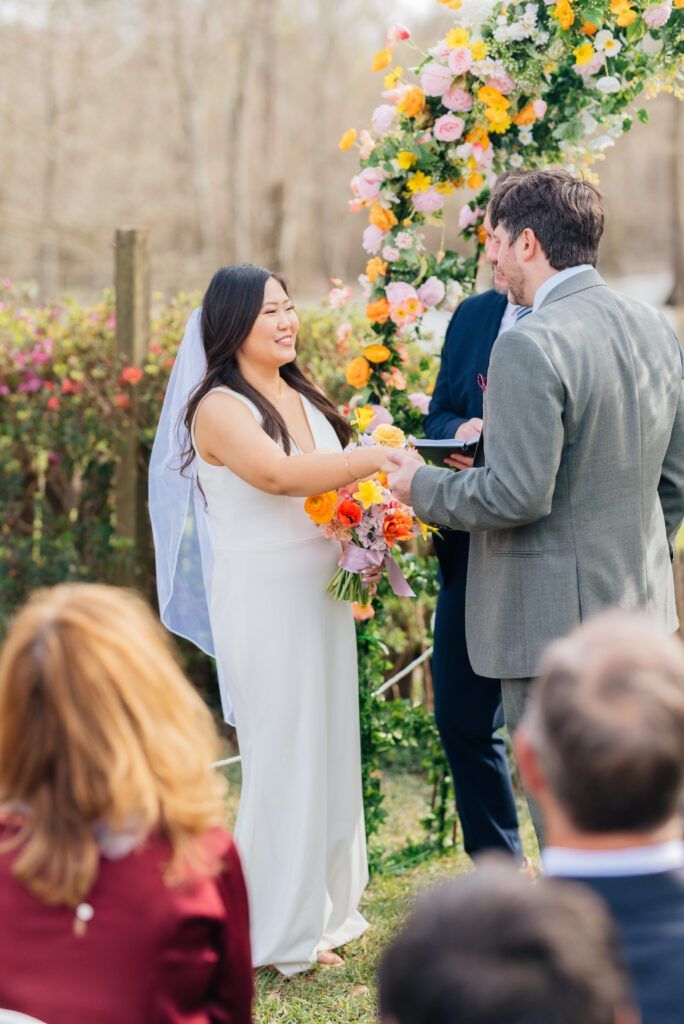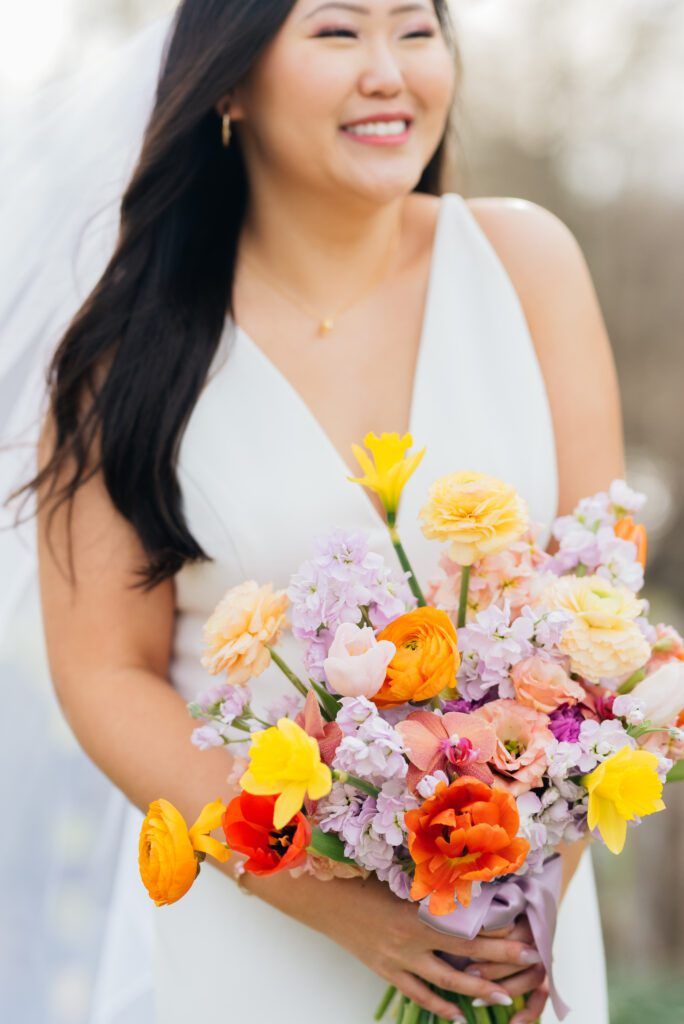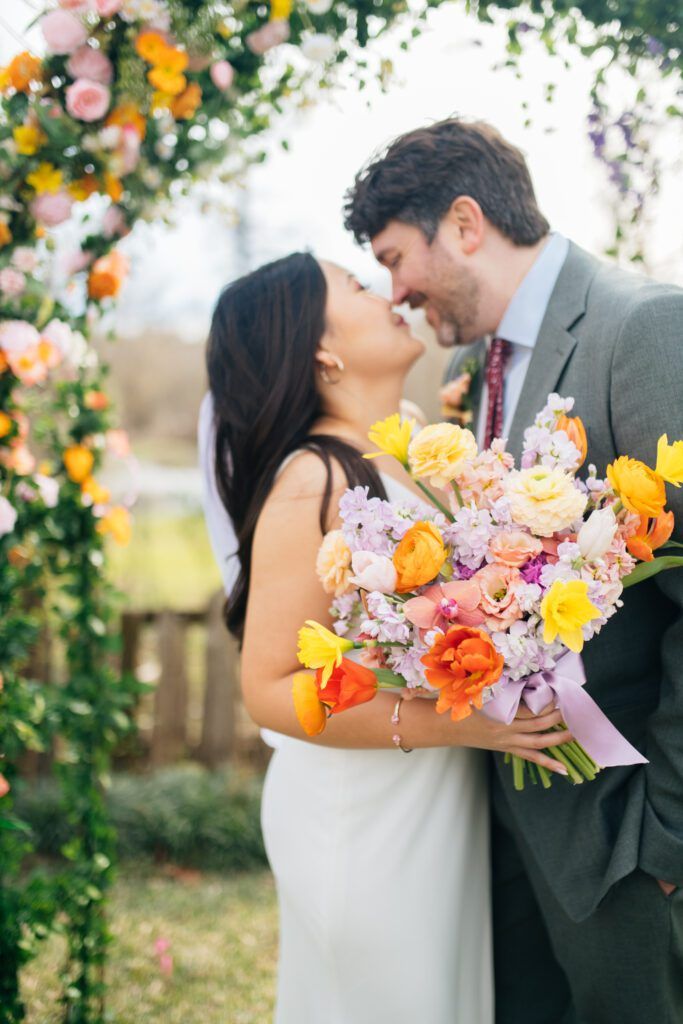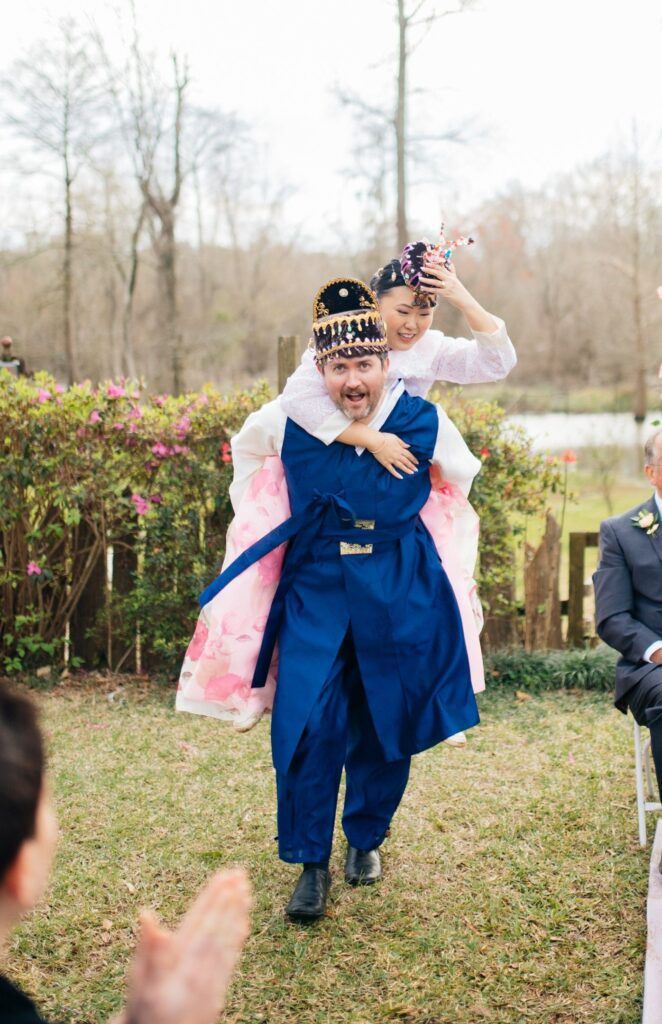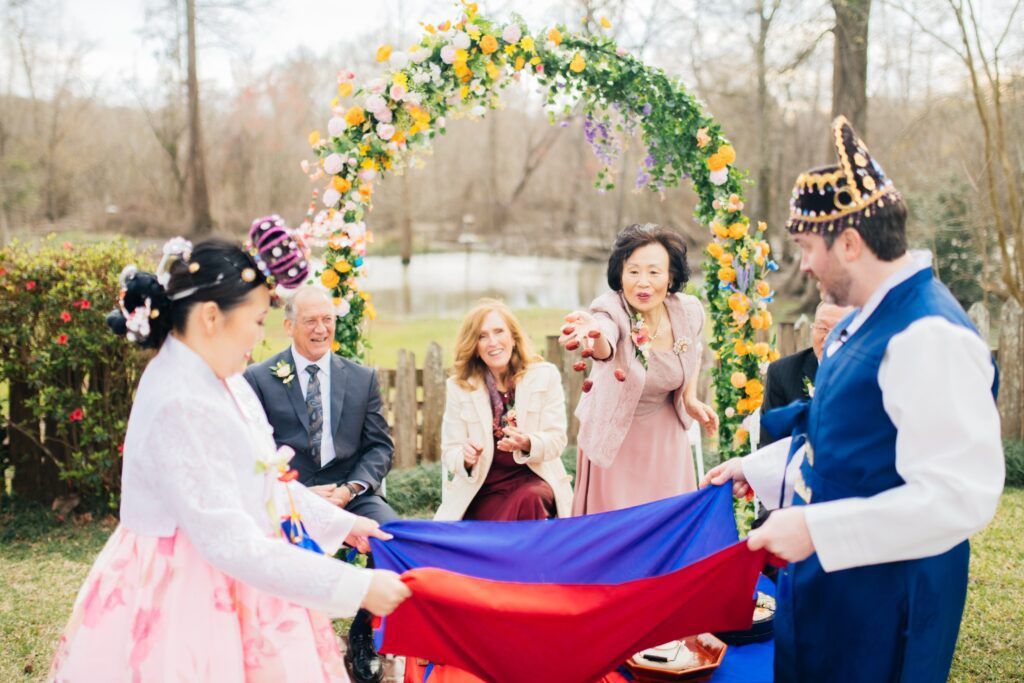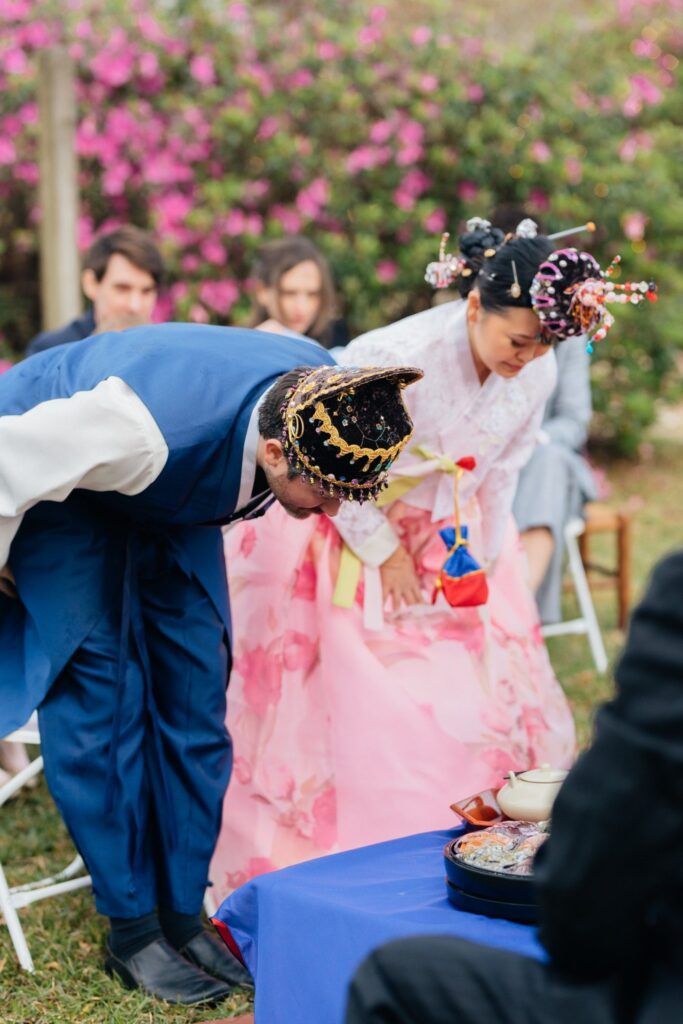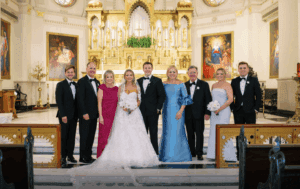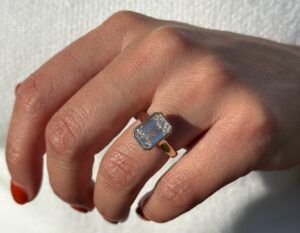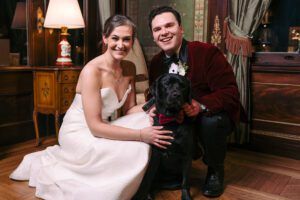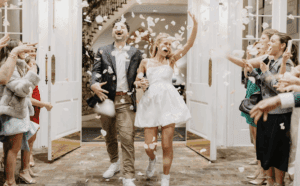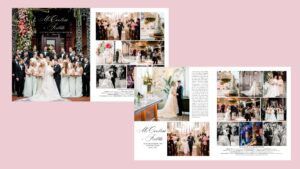Western and Korean wedding traditions came together on Bo Kim and Joe Cancienne’s big day
Weddings are more than just an excuse for a party. At their core, they are a symbolic celebration of a couple’s new life together. For Bo Kim and Joe Cancienne’s big day, they knew they wanted to blend both of their cultures, Korean and Western respectively, to create a special ceremony that honored their families and put on display the new life they would have together.
“We wanted to create a magical experience, where every detail tells a story and reflects our unique love and personalities,” Kim says.
The Ceremony
“Our wedding ceremony was broken into two parts,” Kim explains. “We began with a traditional Western wedding ceremony followed by a Korean paebaek The Korean traditional Paebaek tea ceremony is popularly performed as a way for the new couple to pay their respects to both sides of the family while also receiving blessings for their new union.”
The Korean Traditions
“We did an abridged version of the Paebek and kept it pretty informal,” Kim notes. “Although there are many, we only featured these five traditions.”
The bowing: The bride and groom pay their respects to the parents by bowing in unison.
The serving of the tea: The couple serves tea to their parents.
The offering of blessings: The couple receives a special gift from the parents.
The catching of dates and chestnuts: The bride and groom will extend a long apron and the parents toss dates and chestnuts to the couple. The number of dates and chestnuts the happy couple catch in the cloth represent the number of children they will have, with dates representing sons, and chestnuts representing daughters. (“I believe we caught 24,” Kim recalls. “Yikes!”)
The piggyback ride: The ceremony concludes with the groom giving his bride a piggyback ride around the table, a gesture of his everlasting devotion and love for her throughout their life.
The Fashion
“Traditionally on the wedding day, the bride and groom wear elaborate hanboks in bright red and blue colors, with draping fabrics and various accessories,” Kim says. “Hanbok is the traditional attire of the Korean people but nowadays, it is only worn as formal wear on special occasions. For our ceremony, we chose simplistic Korean hanboks that suited our personal styles. My father handcrafted the headwear to accompany the outfits, which was a special touch.”
For more wedding inspiration, go to inregister.com. And get your copy of the 2023 Weddings issue on June 1, 2023.




